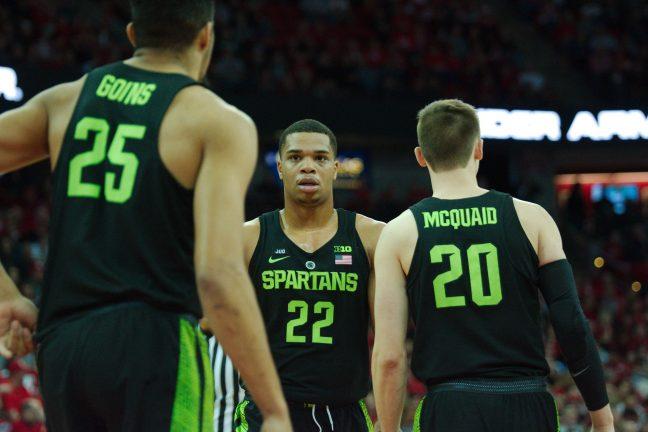In the first two rounds of March Madness we have seen a No. 16 seed take down a No. 1 seed for the first time in history, a No. 7 seed overcome a 22 point deficit versus a No. 2 seed to advance to the Sweet 16 and the top four seeds in what was supposed to be the most dominant region of the bracket get eliminated by the end of last weekend. While these games were incredible, how common is the trend of upsets becoming in the NCAA Tournament?
Though there were many close games, upsets in the round of 64 games were rather tempered compared to what would come. No. 16 UMBC, No. 13 Buffalo, No. 13 Wichita State, No. 11 Loyola Chicago and No. 11 Syracuse highlight the list.
In the No. 13 over No. 4 upsets as well as the No. 11 over No. 6 ones, the statistics point to the results being only slightly above average. The No. 4 seed wins over the No. 13 seed 79.4 percent of the time, meaning that usually one No. 4 seed will be upset in the first round, but this year it was two. This is still a 29.4 percent statistical swing, but with a small sample size.
At the same time, the No. 6 seed wins 62.5 percent of the time, meaning that the 11-seed will upset the 6-seed 1.5 times per year, with it occurring twice this year.
But No.1 Virginia losing to No. 16 UMBC is clearly unprecedented, as it has never happened before in the 134 previous 1 versus 16 matchups.
Looking at the round two matchups, these games differentiated 2018 in terms of parity between the lower and higher seeds.
To begin the round, No. 1 Xavier lost to No. 9 Florida State, an event that happens only 9 percent of the time! Coupled with the No. 1 overall seed in Virginia losing the previous week, there definitely seems to be a difference this year in the comparative strength of the top seeds.
North Carolina and Cincinnati were the two No. 2 seeds that fell in the second round, each losing to No. 7 seeds with Purdue nearly joining them after barely edging out a three point victory over No. 10 Butler.
Interestingly enough, No. 2 seeds fare better historically against No. 7 seeds than No. 10 seeds in the second round, winning 69.1 percent of the time as opposed to 61.7 percent. While again a small sample size, There was about one more No. 2 seed upset in the round of 32 than we normally see.
The averages for No. 3 wins in the round of 32 are fairly favorable to the underdog at about 60.9 percent. This year, Michigan State and Tennessee were the two No. 3 seeds that went down in round two.
Since only two of the four No. 3 seeds went down in the second round and none went down in the first, this may not seem too different from years past, but it is important to remember that Michigan and Florida also nearly fell in one possession games versus their No. 6 seed opponents, which would have meant that all four of the No. 3 seeds would not have advanced to the Sweet 16.
To sum all this information up, the second round statistics point to an above average amount of upsets with at least the top two seeds and the amount of ‘near upsets’ we had point to a bubble potentially bursting in the college basketball landscape.
Whether it be the one and done rule in the NBA, AAU culture in high school, or a number of other causes March Madness is certainly earning its name this year.


